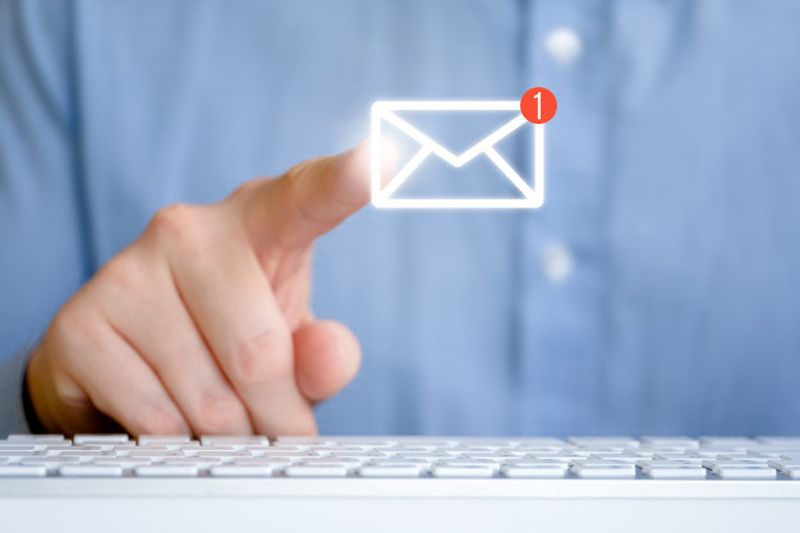
Email tracking allows you to track the sources of requests sent by email, measure the performance of individual or mass emails, and finally, conveniently pull together the data you have.
Email tracking software allows you to get a full picture of existing leads, find new, effective conversion channels, and reconfigure campaigns to get maximum leads within your budget!
Now we’ll give you a small guide to email tracking and share some tips on using tracked emails for growing your business.
Main benefits of using email tracking tools
- It saves your time: if your offer is not interesting to a group of subscribers and they do not read your emails, you will see this after sending the first letter. Conversely, if recipients open the emails you send, follow the links, and check the attachments, you’ll know the details right away, and then, you will be able to reach out to them with effective follow-ups!
- It provides context: email intelligence software offers you helpful insights into your interactions with prospects, leads, and existing customers. You can find out their personal and professional history, get detailed information about their organization, watch their feed on social networks, view the history of your correspondence with them, etc. Use this data to toughen your outreach!

4-step guide to email tracking
Choose appropriate email tracking tools
There are plenty of good email tracking tools available today: HubSpot, Yesware, Salesforce Pardot, Mailchimp, SalesHandy, Cirrus Insight, Zoho Campaigns, and many others. But some of them just tell you whether your letter was opened or not; of course, it’s not enough for analyzing the efficiency of your emails!
To get a full picture, you need to find advanced tools that provide robust analytics, functionality for gauging the quality of your email list, various features to engage subscribers, and so on.
You will need to be aware of where the subscriber stands in his customer journey, to understand why certain customers clicked and followed certain links, and in general, to measure the role your emails play in the larger marketing funnel.
If you are faced with such tasks, you’ll need the advanced email tracking software. For instance, it’s a good idea to leverage the potential of Revenue Inbox, an accurate email tracking tool for Gmail and Outlook that allows you to:
- track each email opening and receive immediate notifications for every letter opened or link clicked and to be aware of every detail when it comes to leads engaging with you. Follow up, respond and connect with them just at the right moment;
- get the best of thorough email analytics and see how your prospects engage with links and email attachments to exactly know what engages your best prospects. It’s quite easy to build automations around email, click, and attachment engagements;
- utilize email templates to save time and effort. At one click of a button, it allows you to use your email templates from Salesforce when creating an email.

Set the rules for email tracking practices
When used correctly, technologies such as email tracking are able significantly perk up the quality of customer engagement.
Determine the correct use of these tools within your organization’s privacy policy: when your existing/potential customers sign up for email subscriptions, you should disclose that email tracking is used.
Typically, these performance standards are set before the using tracking tools and are reviewed periodically to maximize customer satisfaction.
You should also define some rules for how your employees will contact email recipients after they have got read-notifications.
Start composing effective emails
Typically, it is easier said than done. However, when you have all the imperative information about the subscribers at your fingertips, it will be much easier to compose an effective and personalized email!
For example, advanced email tools like Revenue Inbox offer to view important information about subscribers such as information about the organization, open deals, communication schedule, and much more, and even view prospect’s contact profile right in your inbox!
In terms of price, it’s pricing is much more affordable compared to, for example, Salesforce pricing (see here) (Salesforce offers a similar feature in Lightning Experience).

Monitor the tracking checkboxes
At this stage, email tracking tools work a bit differently. In most tools, your tracked emails are indicated by checkboxes that you see in your Gmail or Outlook toolbar after downloading the software. This is how you choose which emails to track.
Ensure that your recipient has agreed to receive your emails before sending them or using tracking tools.
Using tracked emails for your business growth
Build a relevant dialogue
Email intelligence software allows you to create the most relevant content for your recipients and send it at the most convenient time for the latter.
Instead of sending “one-size-fits-all” templates to your potential customers, you gain the ability to create personalized messages using unique data about their business and history of interaction with your organization.
If the recipient didn’t open your first email, then stop. Nobody wants to have their inbox filled with follow-ups they aren’t even interested in.
Follow up with supplementary context
Email intelligence tools generate the notifications that help you determine when you should add additional context to your “dialog”. For example, the recipient clicked on a link about company values: it’s a good idea to send him additional information on this topic.
A personalized approach offers multiple benefits, and the potential customer will surely appreciate the fact that you can “foresee” his interests.
Shorten your email list
If you have contacts on your list that do not open any of your emails, feel free to remove them from the mailing list or send them one last letter, giving them a simple and convenient one-click option to unsubscribe
















